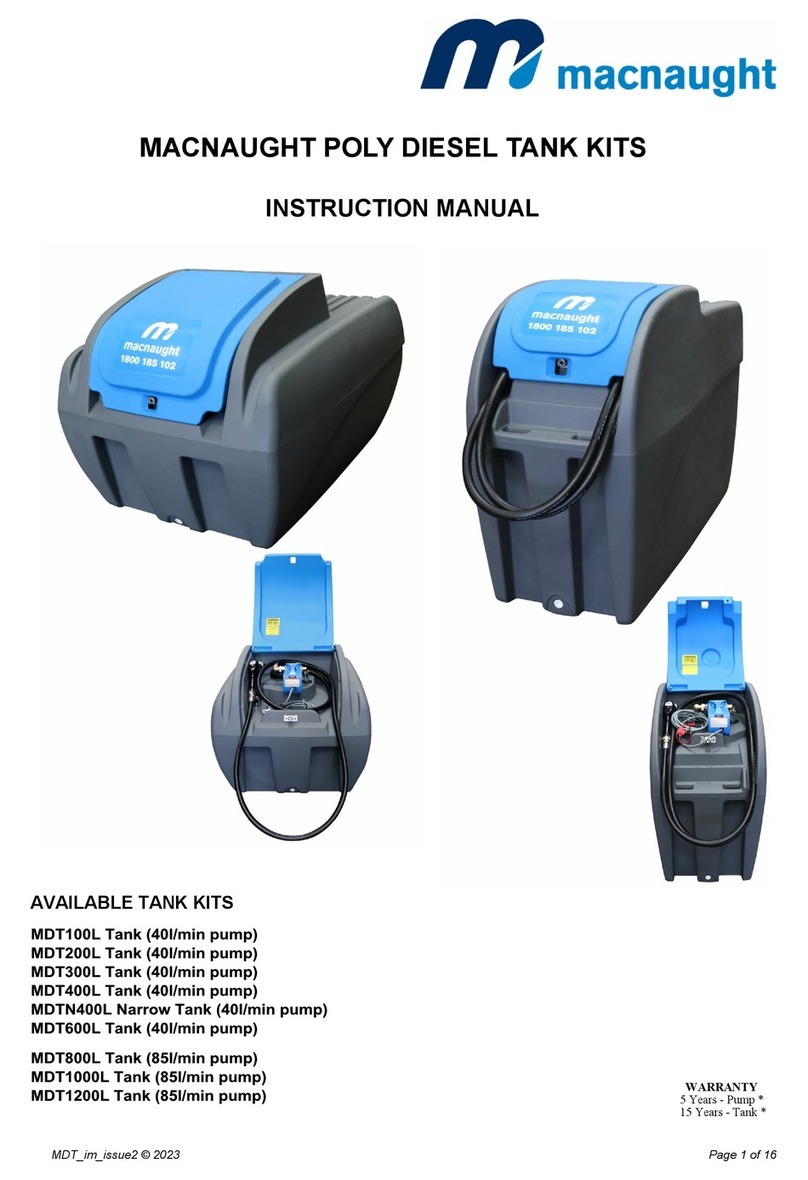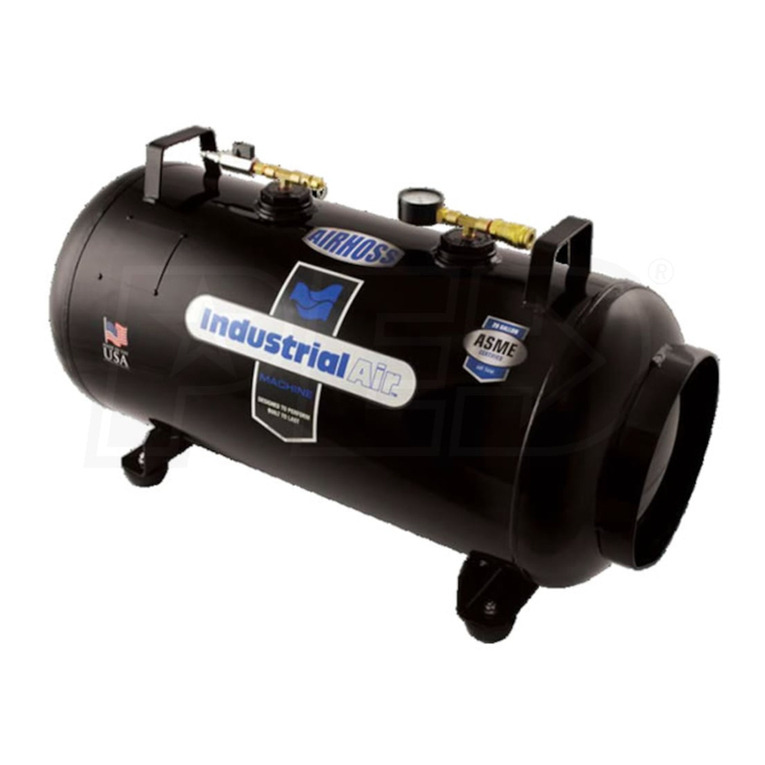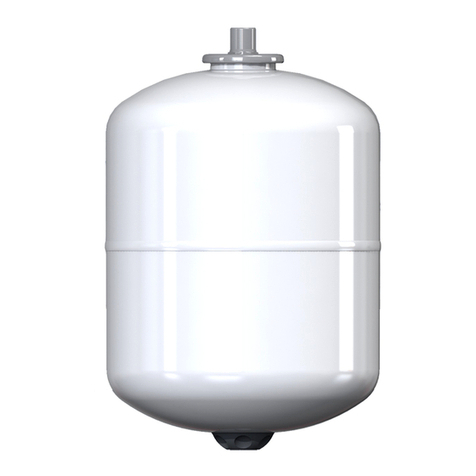RS 219-765 User manual

Note: Please read all relevant sections of this instruction
leaflet before installing and/or operating the cleaner.
The RS range of ultrasonic cleaning tanks provides the user
with a complete range of functions and capacities for both light
and heavy duty applications throughout industry.
Features
Super sealing 'O' rings.
Recessed ventilation.
Sealed membrane keypad (digital models).
Over temperature thermostat (heated models).
Operating level line.
Quick disconnect drain (on 5.71 litres and above).
Pour spout (on models below 5.71 litres).
Non-skid feet.
Integral handles.
All models are supplied complete with lids. Solid and
perforated insert trays are available for all models as extras.
WARNING
Do not place parts or containers directly on the bottom of the
cleaning tanks; use a tray or wire to suspend items.
Do not allow the solution to drop below the operating level line
(one inch from the top) with the cleaner on.
Do not ever use alcohol, gasoline or flammable solutions.
Doing so could cause a fire or explosion. Use only water-
based solutions.
Do not ever use mineral acids or bleaches. These could
damage the tank.
To avoid electrical shock:
Do unplug from power source before filling or emptying the tank.
Do keep the control panel and the area around the cleaner
clean and dry - wipe up solution which spills over the tank brim.
Water and high voltage can cause electrical shock.
Do not operate the cleaner without proper grounding.
Do not remove the grounding prong on the line cord plug.
Do not disassemble your cleaner - high voltage inside the
cleaner is dangerous.
Do not immerse the cleaner in water.
To prevent personal and/or property damage:
Do operate the cleaner with a vented cover or no cover.
Do use water-based solutions.
Do not ever use alcohol, gasoline or flammable solutions.
Doing so could cause a fire or explosion and will void your
warranty. Use only water-based solutions.
Do not ever use mineral acids or bleaches. These could
damage the tank.
Do not touch the stainless steel tank or cleaning solution - they
may be hot.
Do not allow fluid temperature to exceed 70¡C (160¡F).
Do not place your fingers or hands into the tank while the
cleaner is operating. Doing so may cause discomfort and
possible skin irritation. Avoid contact with solutions and provide
adequate ventilation.
To prevent damage to the cleaner:
Do change your solution regularly.
Do not cover vents on the cover.
Do not operate the cleaner dry.
Do not place parts or containers directly on the bottom of the
cleaning tank; use a tray or wire to suspend items. Failure to
comply may cause transducer damage and will void your
warranty.
Do not allow the solution to drop below the operating level line
(one inch from the top) with heat or ultrasonics on. Failure to
comply may cause transducer and/or heater damage and will
void your warranty.
If warm water is added to the tank, do not allow temperature to
exceed 70¡C.
Failure to comply with these warnings will void your
warranty.
Before using your ultrasonic cleaner, please read and thoroughly
understand these warnings. Failure to follow them may result in
serious personal injury or property damage.
Installing your cleaner
Check the plate on the back of the cleaner for correct power
requirements. Position your cleaner within easy reach of a
standard grounded electrical outlet. Do not place the cleaner on a
circuit which could become overloaded.
If your cleaner does not operate correctly, first refer to the
troubleshooting section for possible causes.
Operating your mechanical timer cleaner.
RS stock no. 219-765
Before you start cleaning
Note: If this is the first time you are running the cleaner, or if
you have changed cleaning solution, you must degas
the solution. If not, skip to 'Cleaning items".
Degassing
Cleaning items
Note: To stop ultrasonics at any time, turn the TIMER to zero.
Ultrasonic Cleaning Tanks
Stock No. 219-765, 219-771, 219-787, 219-793,
219-800 and 219-816
Step
1
Action
Select your cleaning solution.
3Add cleaning solution to the tank water.
4Plug the cleaner into a grounded outlet.
2 Allowing for the volume of the parts you will be
cleaning and cleaning solution, fill the tank with
warm tap water to the operating level line (one
inch from the top).
Step
1
Action
Turn the TIMER to 5-10 and let the cleaner run
to allow the solution to "degas".
¥
¥
¥
¥
¥
¥
¥
¥
¥

bath. Reduced surface tension will increase cavitation.
Solvents - never use solvents. Vapours of flammable
solutions will collect under the cleaner, where ignition is
possible from electrical components.
Renewal - renew cleaning solutions often to increase
ultrasonic cleaning activity. Solutions as with most chemicals,
become spent over time. Solutions can become contaminated
with suspended soil particles which coat the tank bottom,
inhibiting ultrasonic activity.
Application hints
WARNING
Never clean novelty or inexpensive jewelry in the cleaner. The
combination of heat and vibration may loosen a cement-held
setting.
Never clean gemstones such as emerald, amethyst, pearl,
opal, coral, turquoise, peridot or lapis lazuli in the cleaner.
First time cleaner - first experiment with one piece, then
proceed with the remainder.
Solution level - be sure to maintain solution level at the tanks
'operating level' line (one inch from the top).
Load size - It is faster and more efficient to run several small
loads rather than a few big loads.
Placing items - never allow items to sit on the bottom of the
tank. Always place them in a tray or beaker or suspend in the
solution.
Rinsing items - after cleaning use a clean water bath to rinse
away chemicals adhering to items.
Drying items - air drying at room temperature works well for
some items. Place items requiring faster drying under hot air
blowers or in ovens.
Lubricating items - when necessary, relubricate items
immediately after cleaning.
Troubleshooting
If your cleaner does not operate satisfactorily, please check the
tables over leaf for possible causes.
WARNING
High voltage inside - dangerous shock hazard. DO NOT
attempt to disassemble or repair the cleaner.
Problem
Cleaner will
not start.
Cause
Cleaner not plugged
in properly
Mechanical timer-
Mechanical timer
not ON
Digital timer-
POWER switch not
ON.
Digital timer-
Malfunctioning start
button.
Blown fuse.
Heater malfunctions.
Mechanical timer-
HEAT not ON
Digital timer- HEAT
not set properly.
Digital timer-
Malfunctioning
membrane.
What to do
Plug into functioning
electrical outlet.
Turn timer clockwise.
Press power switch
ON.
Call Technical Helpline
(0536 402888).
Call Technical Helpline
(0536 402888).
Call Technical Helpline
(0536 402888).
Turn HEAT ON.
See operating your
digital timer and
heater cleaner.
Call Technical Helpline
(0536 402888).
Cleaner
operates but
does not
heat
solution.
Problem
Cleaner
operates but
does not
maintain set
temperatures
Cause
Malfunctioning heater
or sensor
components
Interrupted
calibration sequence.
Digital timer-
Malfunctioning timer
board.
What to do
Call Technical Helpline
(0536 402888).
Press SET DISPLAY.
Call Technical Helpline
(0536 402888).
Cleaner
operates but
display does
not function.
Cleaner
stops
operating
and display
flashes 75
Decreased
ultrasonic
activity.
Overheat condition
Solution is not
degassed.
Solution is spent.
Solution level is
incorrect for load.
Tank bottom is
covered with soil
particles.
Using deionized
water in the tank.
Turn cleaner off.
Allow cleaner to cool,
check solution level,
then restart. Refer to
Optimizing your
cleaner.
Make sure that tank
was filled with warm
tap water plus
cleaning solution and
has run 5-10 minutes.
Change solution.
Adjust solution to
operating level line
(one inch from top)
with load.
Empty, then clean
tank with warm water.
Wipe with a
nonabrasive cloth.
Use warm tap water in
the tank.

Setting operating parameters
Cleaning items
To repeat a timed cleaning cycle - press ON/OFF once while
in the Set Time mode. This cleaning cycle time will remain in
memory until reset or you turn off the power to the cleaner.
To reset ultrasonics time during a cleaning cycle - press
ON/OFF once, press SELECT OPTION until the Set Time LED
lights. To increase time, press SET DISPLAY to your desired
setting. To decrease time, press CLEAR DISPLAY, press SET
DISPLAY to set the time, then press ON/OFF once to resume
the cycle.
To monitor the solution temperature - press SELECT
OPTION until the TANK TEMP LED lights. The LED display
will display the solution temperature in degrees Centigrade
(¡C). The cycle will continue during this process.
To calibrate the temperature display to a reference
thermometer - turn off ultrasonics by pressing ON/OFF once.
Press SELECT OPTION until the TANK TEMP LED lights. The
LED display will display the actual solution temperature in
degrees Centigrade. Use a laboratory thermometer to read the
solution temperature. For optimum accuracy allow two minutes
after switching off ultrasonics and stir solution measuring
temperature with thermometer. Calibrate at the midpoint of
your expected operating range (for example, for 20-60¡C,
calibrate at 40¡C)
If the two readings agree, the cleaner is calibrated. If not,
press CLEAR DISPLAY to clear the LED display reading then
press SET DISPLAY to set the cleaner to the laboratory
thermometer reading. This will calibrate the cleaner until you
turn the power off.
Select SET TIME, then press ON/OFF once to restart the cycle,
which will resume its countdown.
Instructions on operation of quick-drain
facility
RS stock nos. 219-793, 219-800 and 219-816
Holding elbow with the tubing exiting horizontally and the other
end with the 'O'-ring pointing upwards, plug the elbow upwards
under the grey quick disconnect fitting in the rear of the unit
until it clicks.
The unit will begin to drain as soon as the connector clicks into
place.
When draining is almost complete, tip the unit to direct all the
fluid towards the drain.
When the unit has completed draining, disconnect the elbow by
pushing in the dark grey button on the drain fitting and
removing the elbow.
The unit is now ready for refilling.
In some circumstances it may be desirable to flush out the
remaining solution inside the tubing in the unit by filling the tank
with some of the new solution and repeating the draining
procedure.
Optimizing your cleaning
Tanks
Cleaning - check the tank for contamination whenever you
change solution. If necessary, remove contaminants with a
nonabrasive cloth and water.
Emptying - always unplug the cleaner before emptying the
tank. Empty the solution into a waste disposal unit.
Filling - always unplug the line cord before filling the tank. Fill
the cleaner to the operating level (one inch from the top with
beaker/tray in place), using warm tap water.
Low solution level - will cause the cleaner to fail. When you
remove heavy or bulky loads from the cleaner, the solution
level may drop below the operating level. If so, be sure to
replace lost solution and degas, if necessary, depending on the
amount used.
Overload - do not rest any items on the tank bottom. Weight
on the tank bottom dampens sound energy and will cause
damage to the transducer . Instead, use a tray and /or beaker
positioning cover to support all items. Allow at least one inch
between the tank bottom and the beaker or receptacle for
adequate cavitation.
Covers - allow the cleaner to heat up faster, to a higher
temperature. However, obstructing the cover vents will cause
the cleaner to overheat.
Temperature
Heater - the heater may cause some discolouration of the tank
wall. This is normal and will not affect the performance of the
unit.
Solution - a cleaner with mechanical timer and heater, without
a cover, will stabilise at 49¡-52¡C (120¡-125¡F) approx. when
ultrasonics and heat are running continuously. However, a
cleaner with mechanical timer and heater but with a cover will
stabilise at 60¡-64¡C/140¡-150¡F running continuously.
A cleaner with digital timer and heater will stabilise at approx.
the same temperature, unless you set the temperature higher.
Ultrasonics will add heat to the solution.
Maximum temperature shutdown
Should the liquid level temperature be raised to 75¡C the
cleaner will shut down and the LED display will blink '75'. Turn
the cleaner off and allow it to cool down. For a faster
cooldown, replace some of the warm solution with cold
solution.
Solution
Solution activity - the amount of visible activity is not
necessarily related to optimum cavitation for cleaning.
Degassing - fresh solutions contain many dissolved gases
(usually air) which reduce effective ultrasonic action. Although
solutions will naturally degas over time, using degas mode
speeds up the degassing process. Solutions that have been
sitting unused for 24 hours or longer have reabsorbed some
gases.
Heat - increases the chemical activity of cleaning solutions.
Surface tension - can be reduced by adding solution to the
Step
1
Action
Place the items into a basket, perforated tray, or
beakers in a positioning cover.
2If using beakers or a solid tray, add cleaning
solution to beakers or tray to cover the items.
3Slowly lower the tray or beakers into the tank.
4Press ON/OFF once to activate the ultrasonics.
Do not stir.
5When the items are clean, press ON/OFF once
to deactivate ultrasonics, then slowly remove
the items from the cleaner.
6 Rinse clean items with clean water and dry, if
necessary.

Operating your mechanical timer and heater
cleaner
RS stock nos. 219-793 and 219-816
Operate as "mechanical timer cleaner" with exception of
degassing procedure.
Degassing
Operating your digital timer and heater
cleaner
RS stock nos. 219-771, 219-787, 219-800
Explanation of controls
Before you start cleaning
Degassing
Step
1
Action
Set the TIMER for the amount of time you wish
the items to be cleaned.
2Place the items into a basket, perforated tray, or
beakers in a positioning cover.
3If using beakers or a solid tray, add cleaning
solution to beakers or tray to cover the items.
4Slowly lower the tray or beakers into the tank.
Do not allow items to contact the tank bottom.
Do not stir the solution.
5When items are clean, slowly remove them from
the cleaner.
6Rinse the clean items with clean water and dry
them, if necessary.
Step
1
Action
Select your cleaning solution.
2Allowing for the volume of the parts you will be
cleaning and for the cleaning solution, fill the
tank to the operating level line (one inch from the
top) with warm tap water.
3Add a cleaning agent to the tank water.
4Plug the cleaner into a grounded outlet.
5Turn the POWER switch ON. The cleaner will
run through a three-second self-test. Wait until
the LED display shows 05 and the DEGAS TIME
function indicator lights.
Step
1
Action
Degas for 5-10 minutes. If necessary, use
SET/CLEAR DISPLAY to alter this setting.
Default degas time is 5 minutes. Refer to the
degassing procedure in the 'optimising your
cleaner' section.
2 Press ON/OFF once to start the degas process.
3After completing the degas time, you are ready
to set operating parameters.
Step
1
Parameters Parameters
SET
TIME
2SET
TEMP
3MONITOR
TEMP
The cleaner is now in Set Time mode
with a default time of 60 mins. If
necessary, use SET/CLEAR DISPLAY
to alter this setting. Press ON/OFF
once to activate timed ultrasonics.
To monitor the solution temperature,
press SELECT OPTION until the
TANK TEMP LED lights. The LED
display will indicate the actual
temperature of the solution.
To set the tank temperature, press
SELECT OPTION until the SET TEMP
LED lights. Then press SET DISPLAY
to alter the setting until the LED display
indicates the tank temperature you
wish to maintain. Press ON/OFF once
to activate heat. The heat indicator
lights.
* When a "SET TEMP" in excess of
60¡(140¡F) is selected the liquid
temperature may not reach that level
because of heat losses through the
tank wall and/or low ambient air
Step
1
Action
Turn the HEAT ON.
2 Turn the TIMER to 5-10 and let the cleaner run
to allow the solution to "degas".
Control
POWER
Function
Press to activate/deactivate power to the cleaner.
ON/OFF After you press SELECT OPTION and set the
LED display for the selected option, press to
activate HEAT (SET TEMP). Degas (DEGAS
TIME) and/or Sonics (SET TIME).
LED
Display
Indicates the tank temperature, set temperature,
ultrasonics time or degas time setting, depending
on your SELECT OPTION choice.
SET/
CLEAR
DISPLAY
Used in conjunction with SELECT OPTION to set
or clear the LED display. Press CLEAR
DISPLAY to clear the LED display to 00. Press
SET DISPLAY to reach your selection.
SELECT
OPTION
When pressed, toggles through the function
indicators. This allows you to check or set the
tank temperature and set ultrasonic cleaning or
degas time.
FUNCTION
INDICATOR
Lights indicate the option selected by pressing
SELECT OPTION.
TANK TEMP: Displays current tank temp. (10¡-
75¡C, ±4¡C).
SET TEMP: Set tank temperature (0¡-69¡C)
see 'operating parameters'.
SET TIME: Set ultrasonic time (1-99 mins.,
time 60 mins. default).
DEGAS TIME: Set degas time (1-99 mins.,
5 mins. default).
HEAT ON: Indicates heat is activated and
has been set (SET TEMP).
When operating in the heated mode with a 'Set Temp'
programmed, the 'Set Temp' indicator light will be
illuminated and will remain on at all times while the
thermostat is controlling the heating elements.

Cleaning methods
There are two methods of cleaning - direct and indirect. Each
has advantages. When in doubt, run test samples using both
methods to decide which one produces the best results for you.
Direct method
Fill the tank with warm water and a cleaning solution.
Place the items to be cleaned in a perforated tray and lower
them into the tank. You can also suspend items on a wire and
then immerse them in the solution.
The advantages of this method are the simplicity of operation
and cleaning effectiveness.
Indirect method
Fill the tank with warm water and a cleaning solution.
Pour your solution medium into a solid insert tray.
The advantages of this method are:
Removed soil stays in the beaker or tray so you can easily
examine, filter or discard it.
You can use one or more solutions at the same time:
two completely different cleaning solutions.
one beaker or tray with a cleaning solution and one
with a rinse solution.
Cleaning solution in your tank needs to be changed less often.
Cleaning solutions
WARNING
Do not use corrosive solutions, such as bleaches, strong acids
or powerful caustics, in ultrasonic tanks, or you will void the
warranty. Only use non-flammable solutions and water-based
solutions. Never use 2 solutions together (indirect method)
which could react together to form hazardous by-products.
Solution types
Water-based solutions are either slightly acidic or alkaline.
They include detergents, soaps and industrial cleaners
designed to remove specific soils. Always check the
compatibility of the cleaning solution with the material which is
to be cleaned.
Acidic water based solutions
Remove rust, tarnish or scale. They range from mild solutions
that remove tarnish, to concentrated, inhibited acidic solutions
that remove investment plaster, milk-stone, zinc oxide and rust
from steel and cast iron as well as smut and heat-treat scale
from hardened steel.
Alkaline water-based solutions
Include carbonates, silicates and caustics. These cause
emulsifying action, which keeps soil from redepositing on the
cleaned surface, and improves cleaning action in hard water.
Alkaline strength Removes
Mild Light oils and greases, cutting oils and
coolant compounds.
Mild to strong Heavy grease and oil, waxes, vegetable
oils, inks, wax or fat-base buffing and
polishing compounds, milk residues and
carbohydrates.
Heavy-duty Mill scale, heat-treat scale, corrosion or
oxides.
Change the cleaning solution periodically. Cleaning solutions
can become contaminated with suspended soil particles which
coat the tank bottom. This coating lessens the ultrasonic action
and reduces cleaning efficiency. Certain solutions will cavitate
better than others.
Heat and cavitation
Increase the chemical activity of cleaning solutions. Some
materials may be damaged by this stronger chemical action.
When in doubt, test run samples of items to be cleaned.
Caustic solutions
Used to remove rust from steels, metal alloy corrosion and a
variety of tenacious soils.
Cleaning solutions
Solution amounts
Solution amounts may vary. The amount you use depends on
the detergent and type of soil to be removed. Follow
instructions on the solution container and refer to the table
below for the effects of the solution on metals.
How ultrasonics works
Ultrasonic sound is sound transmitted at frequencies generally
beyond the range of human hearing. In your ultrasonic cleaner,
ultrasonic sound (sonics) is used for cleaning materials and
parts. This is how it works:
As sound waves from the transducer radiate through the
solution in the tank, they cause alternating high and low
pressures in the solution.
During the low pressure stage millions of microscopic bubbles
form and grow. This process is called CAVITATION, meaning
'formation of cavities'.
During the high pressure stage, the bubbles collapse, or
'implode', releasing enormous amounts of energy. These
implosions act like an army of tiny scrub brushes. They work in
all directions, attacking every surface and invading all recesses
and openings.
Environmental specification
These units are suitable for:
indoor use
altitude up to 2000M
temperature 10¡C to 40¡C
maximum relative humidity up to 90% non condensing for
temperatures up to 31¡C decreasing linearly to 50% at
40¡C.
installation category II
pollution degree 2
To power the unit connect the IEC mains lead to the IEC socket
situated in the top face of the rear cutout.
¥
¥
¥
¥
¥
¥
¥
¥

RS Components Issued November 1993 9631
Solution effects on metals
Cleaning Agent Steel Brass Aluminium Magnesium Zinc
S/Steel
Steel
Copper
Tin
Optical (1)
Jewelry (1)
Buffing (1)
compound
Oxide (2)
remover
Electronic
cleaner (1)
General (1)
purpose
Industrial
strength (1)
Metal (1)
cleaner 1
Metal (1)
cleaner 2
Metal (1)
cleaner 3
Rust (3) stripper
none
none
none
none
none
none
none
none
none
none
slight etch
none
none
slight stain
none
none
none
none
none
none
none
none
none
none
none
slight etch*
slight etch*
slight etch*
none
slight etch
none
attack**
slight attack
none***
none
none
none
none
none
none
none
none
attacks
attacks
none***
none
attacks
none
none
none
none
none
none
attacks
attacks
none
none
none
none
none
none
none
none
none
none
none
none***
none
none
none
none
none
none
none
none
slight attack
slight etch
* Slight etch on some aluminium alloys.
** WARNING!
Free hydrogen may be released if solution comes into
contact with reactive metals.
*** No effect if solution temperature is less than 140¡F.
(1) = Alkaline, (2) = Acidic, (3) = Caustic.
For oxide remover see RS stock no. 692-508.
General purpose solution see RS stock no. 692-520
Industrial strength solution RS stock no. 692-514 in the cleaning
agents section part 2, section 59 of the RS catalogue.
Technical specification
*Note: In the following table, MT describes the Mechanical Timer option; MTH describes the Mechanical Timer and Heater
option; and DTH describes the Digital Timer and Heater option.
WARNING - This equipment must be earthed
Power requirements: 240V ± 10% 50/60Hz
Solution capacity Frequency Tank size in./mm Weight
(kg.) Heater Max. draw
power req. (Watts)
1
/2gal.
1.91 l. 47kHz
L: 51
/2"
(39mm)
W: 6"/152mm
H: 4"/101.6mm
L: 91
/2"
(241.3mm)
W: 51
/2"/139mm
H: 4"/101.6mm
L: 111
/2"
(292.1mm)
W: 6"/152mm
H: 6"/152mm
L: 111
/2"
(292.1mm)
W: 91
/2"
(241.3mm)
H: 4"/101.6mm
L: 191
/2"
(495.3mm)
W: 111
/2"
(292.1mm)
H: 6"/152mm
3.18
0W
63W
80-MT*
143-DTH
11
/2gal.
2.81 l. 47kHz 4.09 109W 234-DTH
3/4gal.
5.71 l. 47kHz 5205W 335-MTH
21
/2gal.
9.51 l. 47kHz 5.91 284W 469-DTH
51
/2gal.
20.81 l. 43kHz 11.82 561W 881-MTH
Input
power
80W
125W
130W
185W
320W
This manual suits for next models
5
Table of contents
Popular Tank Equipment manuals by other brands
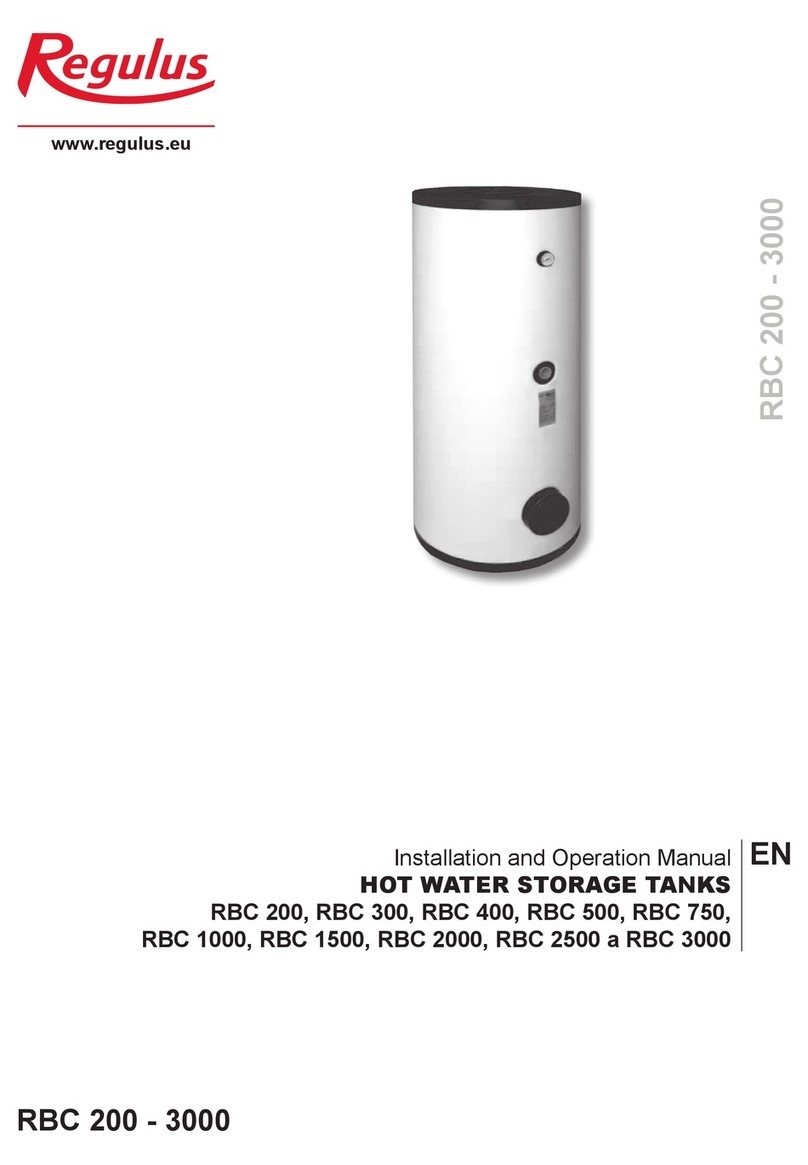
Regulus
Regulus RBC 200 Installation and operation manual
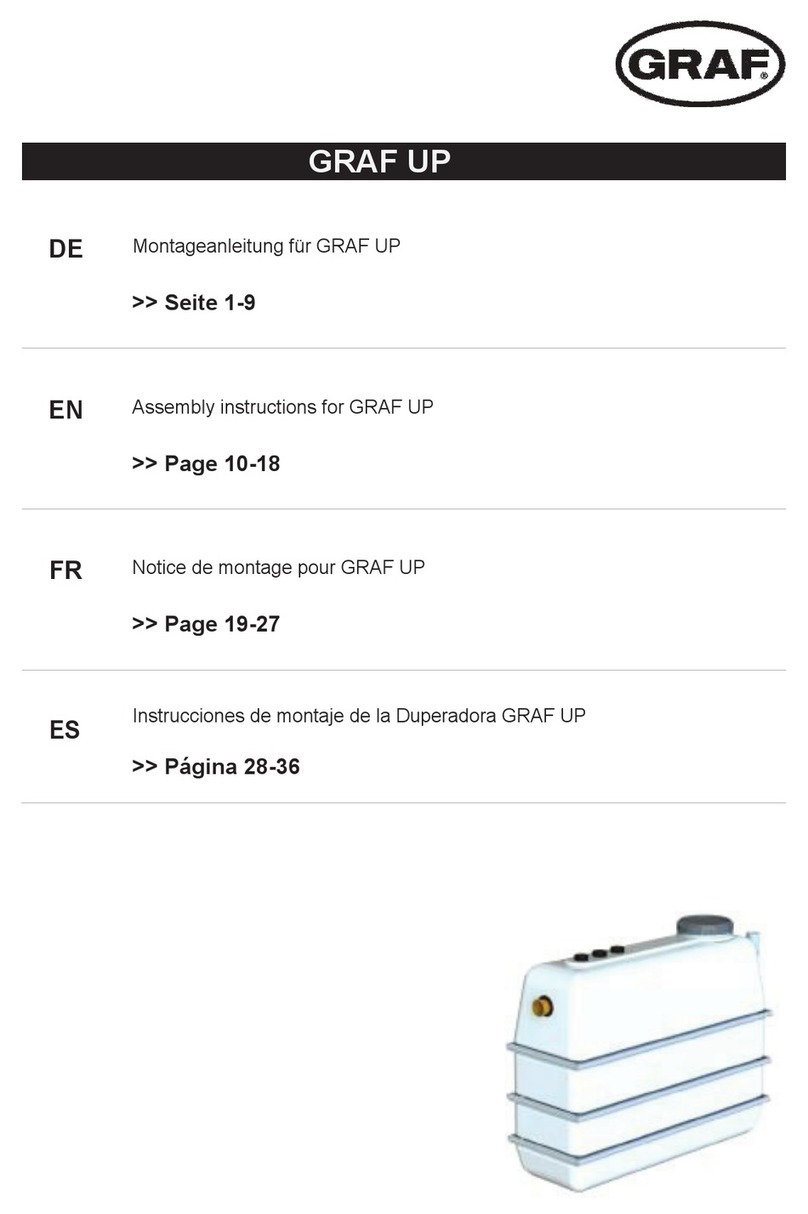
Graf
Graf 160470 UPone 3 EW, 2000 L Assembly instructions
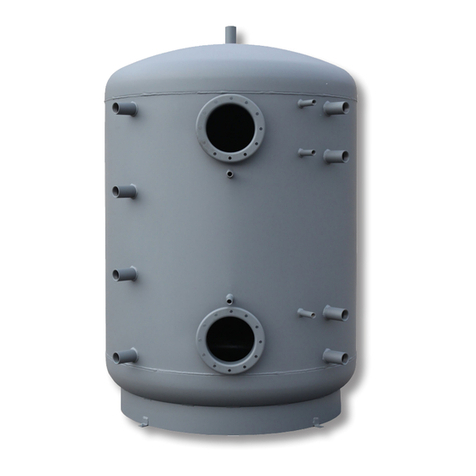
Regulus
Regulus PS2F 3000 N25 Installation and operation manual
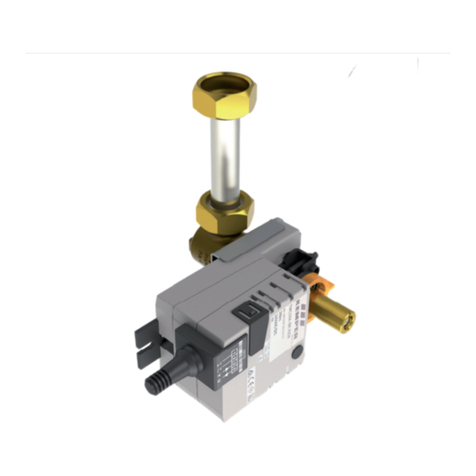
Kemper
Kemper FK-5 installation instructions

VAREM
VAREM Maxivarem LS 40L Instructions for use and maintanence
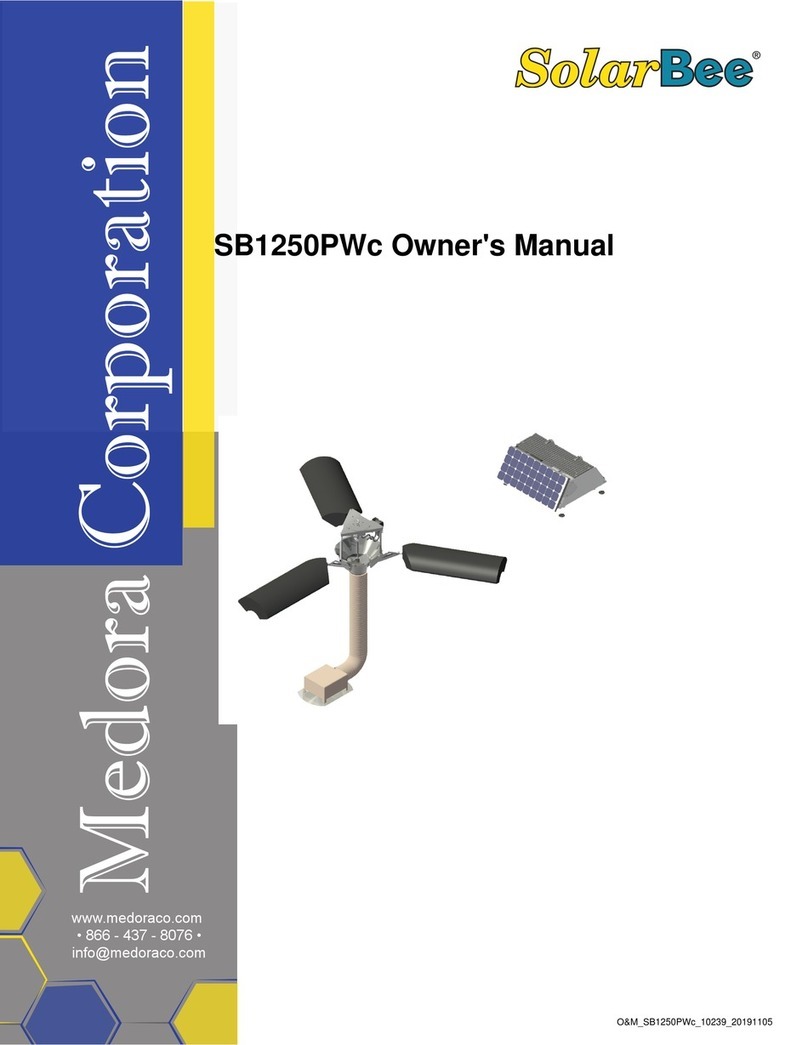
Medora
Medora SolarBee SB1250PWc owner's manual
